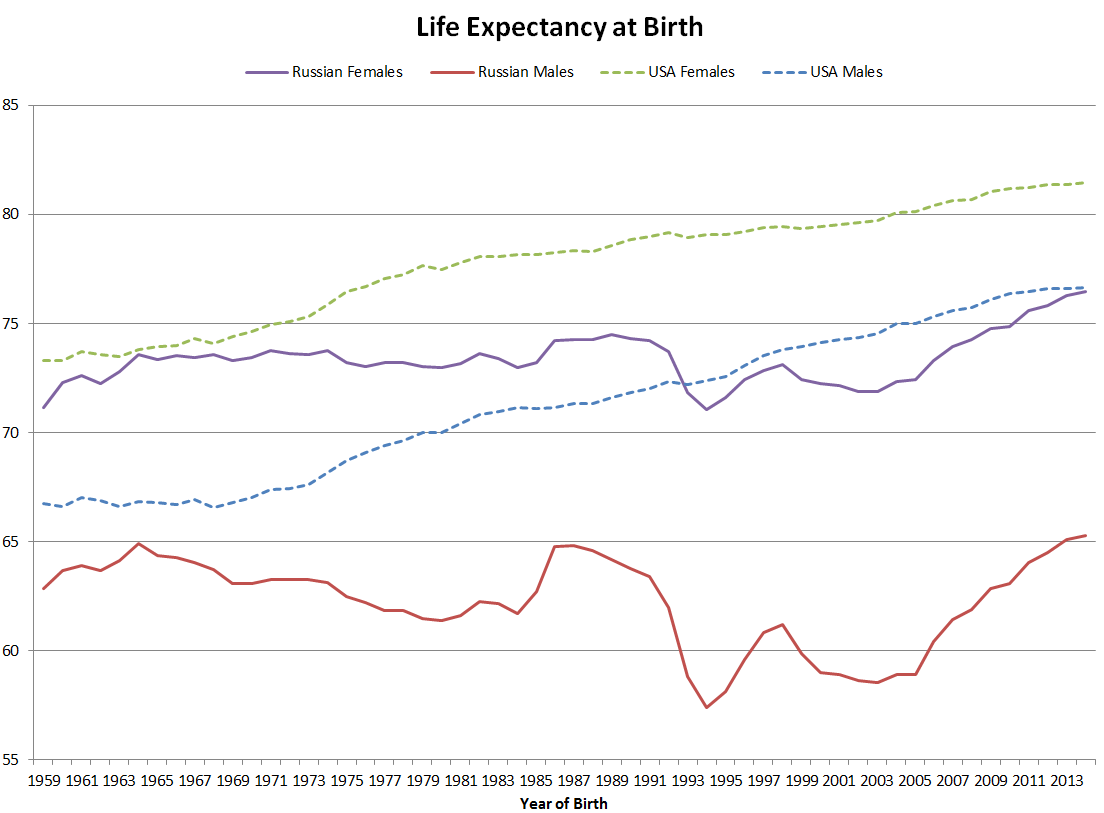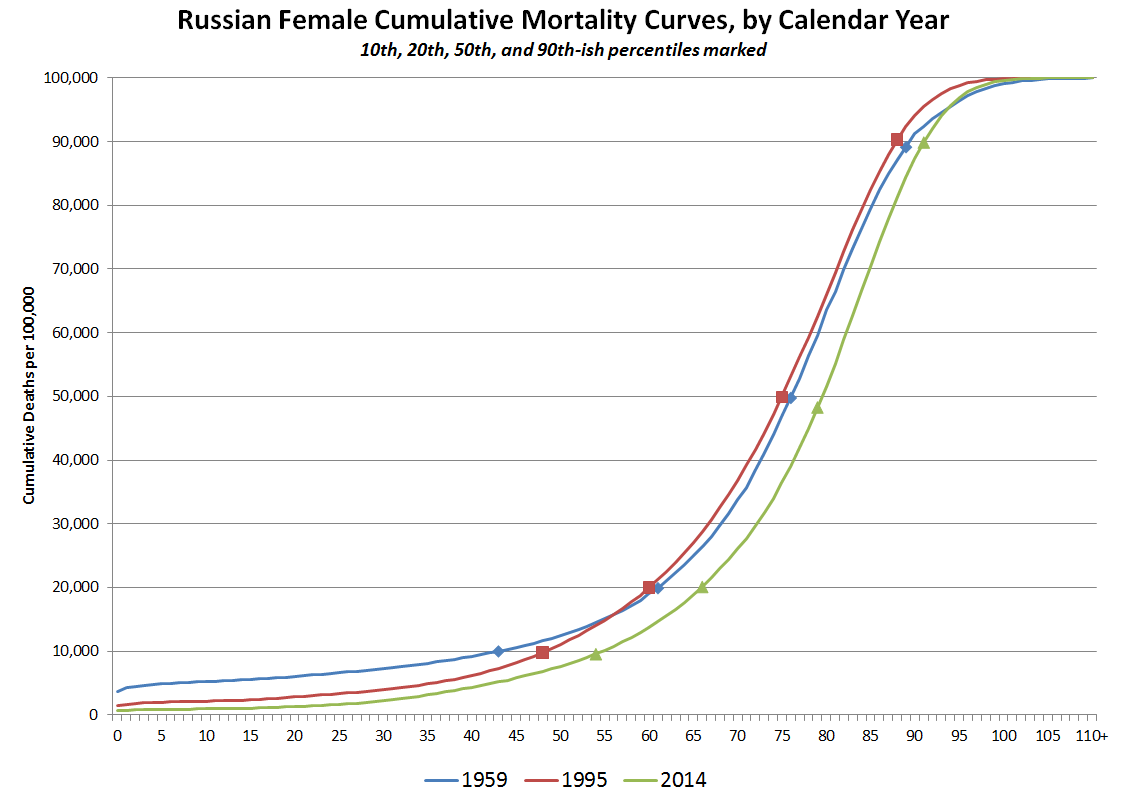Mortality Monday: Suspicious Russian Deaths
by meep
Here is my news hook for this one: Unexpected deaths of six Russian diplomats in four months triggers conspiracy theories
When Russia’s ambassador to the United Nations died suddenly in New York last week, he became the sixth Russian diplomat to die unexpectedly since November, leaving internet conspiracy theorists trying to spot a pattern.
Vitaly Churkin, 64, was rushed to hospital from his office at Russia’s UN mission on 20 February, after becoming ill without warning on his way in to work.
It was initially reported that Mr Churkin may have suffered a heart attack, but following an autopsy medical examiners said the death required further study.
Media company Axios note that not only is Mr Churkin’s death unexplained, but it is also remarkably similar to the deaths of Russia’s Ambassador to India on 27 January, the country’s consul in Athens on 9 January, and a Russian diplomat in New York on US election day, 8 November.
The three other deaths were all also labelled “heart attacks” or the result of “brief illnesses”.
…..Here’s a timeline of the deaths since November.
8 November 2016
On the morning of US Election Day, Russian diplomat Sergei Krivov, 63, was found lying unconscious on the floor of the Russian Consulate in New York with a head injury. Initial reports said Mr Krivov fell from the roof and had blunt force injuries, but Russian officials quickly changed their story and said he died from a heart attack.
BuzzFeed reports police said Mr Krivov’s death looked natural and quickly closed the case, but three months later medical examiners are still unsure how he died.
Additionally, the news site reports it being extremely difficult to ascertain exactly what Mr Krivov did at the consulate. According to Russian language media he may have been a consular duty commander, which means he would have been in charge of “prevention of sabotage” and suppression of “attempts of secret intrusion” into the consulate. In other words, making sure US intelligence agencies did not have ears in the building.
19 December 2016
Russia’s Ambassador to Turkey, Andrei Karlov, 62, was assassinated at a photography exhibition in Ankara.
The diplomat was shot in the back as he made a speech by a Turkish police officer who reportedly shouted: “Don’t forget Aleppo! Don’t forget Syria!”
On the same day, another diplomat, Petr Polshikov, 56, was found dead from gunshot wounds in his Moscow apartment.
He had been shot in the head and a gun was found under the bathroom sink, but little else is known about the circumstances of his death, which are still believed to be under investigation.
Mr Polshikov served as a senior figure in the Latin American department of the Foreign Ministry.
26 December 2016
Ex-KGB chief Oleg Erovinkin, 61, who is believed to have helped the former MI6 spy Christopher Steele compile his dossier on Mr Trump, was found dead in the back of his black Lexus car in Moscow on Boxing Day.
Mr Erovinkin was a key aide to Igor Sechin, a former deputy prime minister and now head of Rosneft, the state-owned oil company, who is repeatedly named in the dossier, the Telegraph reported.
Media reports soon after his body was found suggested Mr Erovinkin had almost certainly been murder, but it was later claimed he had died of a heart attack.
9 January 2017
The Russian Consul in Athens, Greece, Andrei Malanin, 55, was found dead on the bathroom floor in his apartment by another member of embassy staff after he failed to arrive at work or answer his phone.
A Greek police official said there was “no evidence of a break-in” and the death appeared to be from natural causes. Mr Malanin lived alone on a heavily guarded street.
Further investigations are ongoing.
27 January 2017
Russia’s Ambassador to India, Alexander Kadakin, 67, died after a “brief illness” according to Indian media, which quoted sources saying he had been unwell for a few weeks.
Reuters reports Mr Kadakin died from heart failure, but few further details are known.
20 February 2017
Russia’s Ambassador to the UN Vitaly Churkin died suddenly in New York of suspected heart failure. A medical examiner suggested the need to carry out toxicology tests.
So a few notes:
None of these guys were young. The youngest was 55.
To be sure, it sounds like the kind of positions they were in is going to be mainly older men.
And while 55 is young to die for American men, that’s not true for Russian men.
RUSSIAN MALE MORTALITY SUCKS REALLY REALLY BAD
That’s the technical term, you see.
I was shocked the first time I came across this, digging through data from the Human Mortality Database.
This was the graph I made at the time.

Russian male mortality at age 20 is about the same as Japanese female mortality at age 60.
And Russian females are worse than even U.S. males once the stupid period is past.
Yeah. Vodka. Woo.
That’s bad.
Anyway, let me do the death distributions, as I did in my prior post.
Here are the age-at-death distributions for calendar year 2014 (as opposed to cohort year.)

Whoa, look at that male mortality curve. Noticeable levels of deaths in the 20s and 30s — the female mortality curve looks more “normal” for a developed country.
LIFE EXPECTANCY COMPARISONS
Let’s check out life expectancy trends — as before, there are projections going on here, because it’s an estimate of life expectancy at birth. We won’t know the “real” expectancy until the cohort is dead.

That pattern is not good. Pretty much looks like life expectancy has been stagnant for Russia since 1959 — even “disimproved” after the fall of the USSR.
But let’s compare against U.S. stats to see:

Yikes. The U.S. pattern shows the “normal” pattern of improving life expectancy seen in most developed nations (and developing nations, for that matter). The Russian pattern is hideous.
DEATH PERCENTILES FOR RUSSIANS
Finally, let’s check out our death percentiles for men and women in history. I start out at 1959 (the oldest data available), I picked 1995 for a post-USSR point, and 2014 is the most recent data available.
Let’s start with the men:

Holy shit. The death curves for 1959 and 2014 are almost the same past age 50. The 1995 death curve is worse than the 1959 curve.
Note that age 55 is over the 20th percentile in 2014. Age 60 is about the 35th percentile. Age 70 is past the median — over half of Russian men die before age 70.
Russian men dying in their 60s is extremely common.
Now the women:

Here it looks like 1959 and 1995 are the same for women, while there is some improvement for 2014. Not much, though.
In any case, it’s not necessarily suspicious that a bunch of 60-something Russian men drop dead of apparent heart attacks. Russian health is abysmal.
KASPAROV AND LITVINENKO
That said, let’s check out what anti-Putin (and other Russian govt people) activist & chess player Garry Kasparov has to say:
Thanks to
— Garry Kasparov (@Kasparov63) March 8, 2017chucktodd</a> for coincidentally having me on <a href="https://twitter.com/MeetThePress">MeetThePress on all the coincidental Trump connections & coincidental Russian deaths! https://t.co/r1zqcYOVZj
Full interview with
Kasparov63</a>: <a href="https://t.co/kO59WQR2NV">https://t.co/kO59WQR2NV</a> <a href="https://twitter.com/hashtag/MTPDaily?src=hash">#MTPDaily</a> <a href="https://t.co/Zu3yKpLuE4">https://t.co/Zu3yKpLuE4</a></p>— Meet the Press (MeetThePress) March 8, 2017
"I do believe in coincidences. But I also believe in KGB," says
Kasparov63</a> about mysterious deaths in Russia. <a href="https://twitter.com/hashtag/MTPDaily?src=hash">#MTPDaily</a></p>— Meet the Press (MeetThePress) March 8, 2017
While I pointed out the re-publication of Vladimir Bukovsky’s To Build a Castle as an e-book, there was a new publication of an e-book with writing by Alexander Litvinenko called Allegations: An insider’s fatal claims about Putin’s Russia
Note that “fatal claims”?
Litvinenko is dead. He died in 2006 of Polonium poisoning. That stuff isn’t just lying around. He was probably assassinated by one of Putin’s crew.
Description of the book at Amazon:
Alexander Litvinenko was a member of Russia’s FSB, its secret service formerly known as the KGB. Claiming he was ordered to assassinate a Russian tycoon, he was arrested twice before fleeing to the UK. There, he spoke and wrote frequently against what he called the “mafia state” of contemporary Russia under President Putin. Litvinenko was murdered with radioactive poison in 2006 in London. This collection of writings and interviews — curated and translated by another daring dissenter, Pavel Stroilov — lives up to its title, making one claim after another against the FSB and the regime which Litvinenko fled.
There are good reasons to be suspicious of deaths with Russian political connections.
Not sure why Putin would be assassinating his own ambassadors, though (as opposed to extremely vocal critics, like Litvinenko). It could be just one of those Stalin-ish things. It could be Putin has his own Beria (or fears some such).
Or it could just be the natural awful death rate for Russian men.
To be sure, Putin or his henchmen could be sending out poison, killing Russian men at horribly young ages, but I think it’s the poison that’s been in Russia for centuries: Vodka and hopelessness.
RELATED: Suicide rates in Russia. I find that data set to be very odd. I assume that drinking one’s self to death is not ruled suicide.
Related Posts
Drug Overdose Deaths, Part 2: Age-Related Trends 1999-2020 with Provisional Results in 2021
Mortality with Meep: Retrospective on Mortality Trends (and a wee bit about COVID)
Mortality with Meep: Looking at Location of Death Data for 1999-2020, Entire United States

